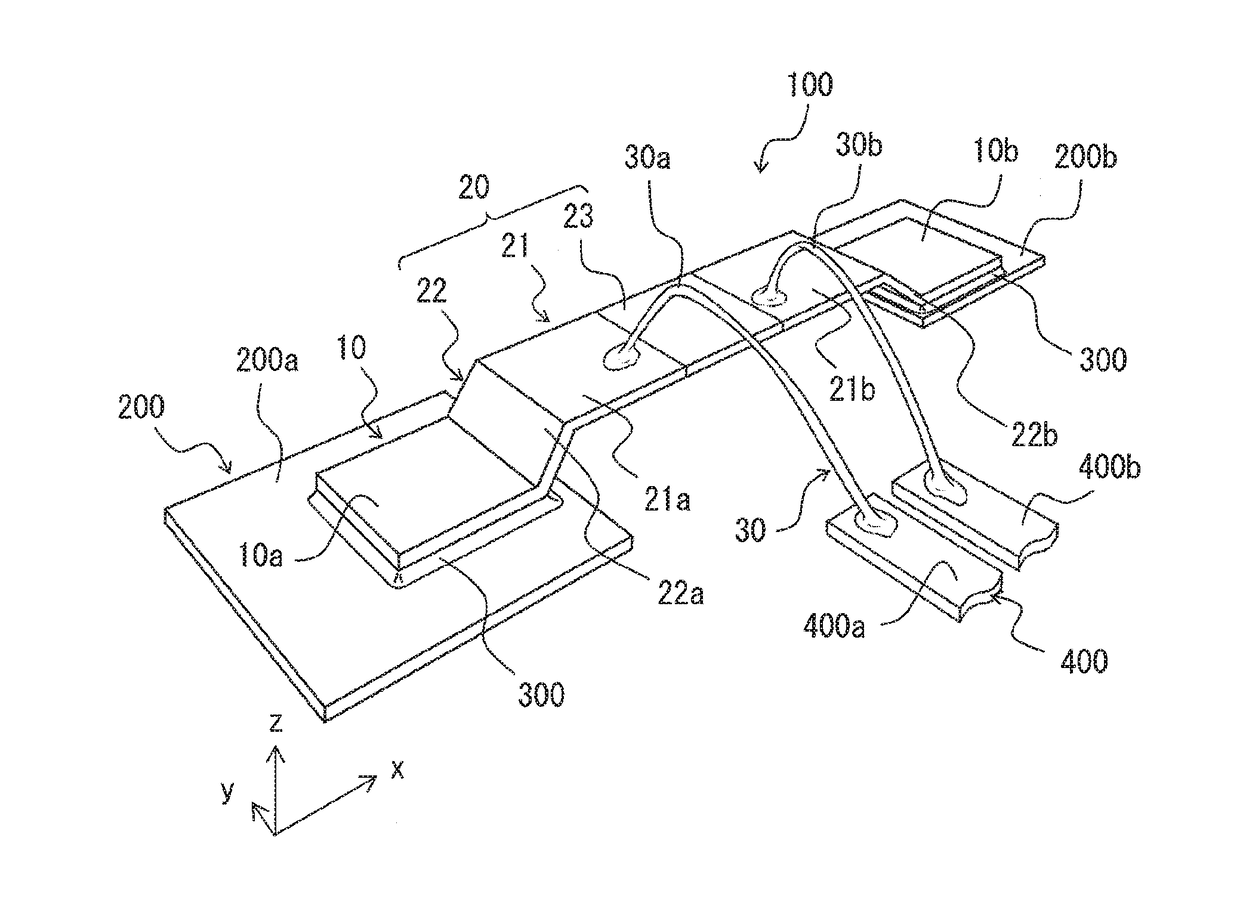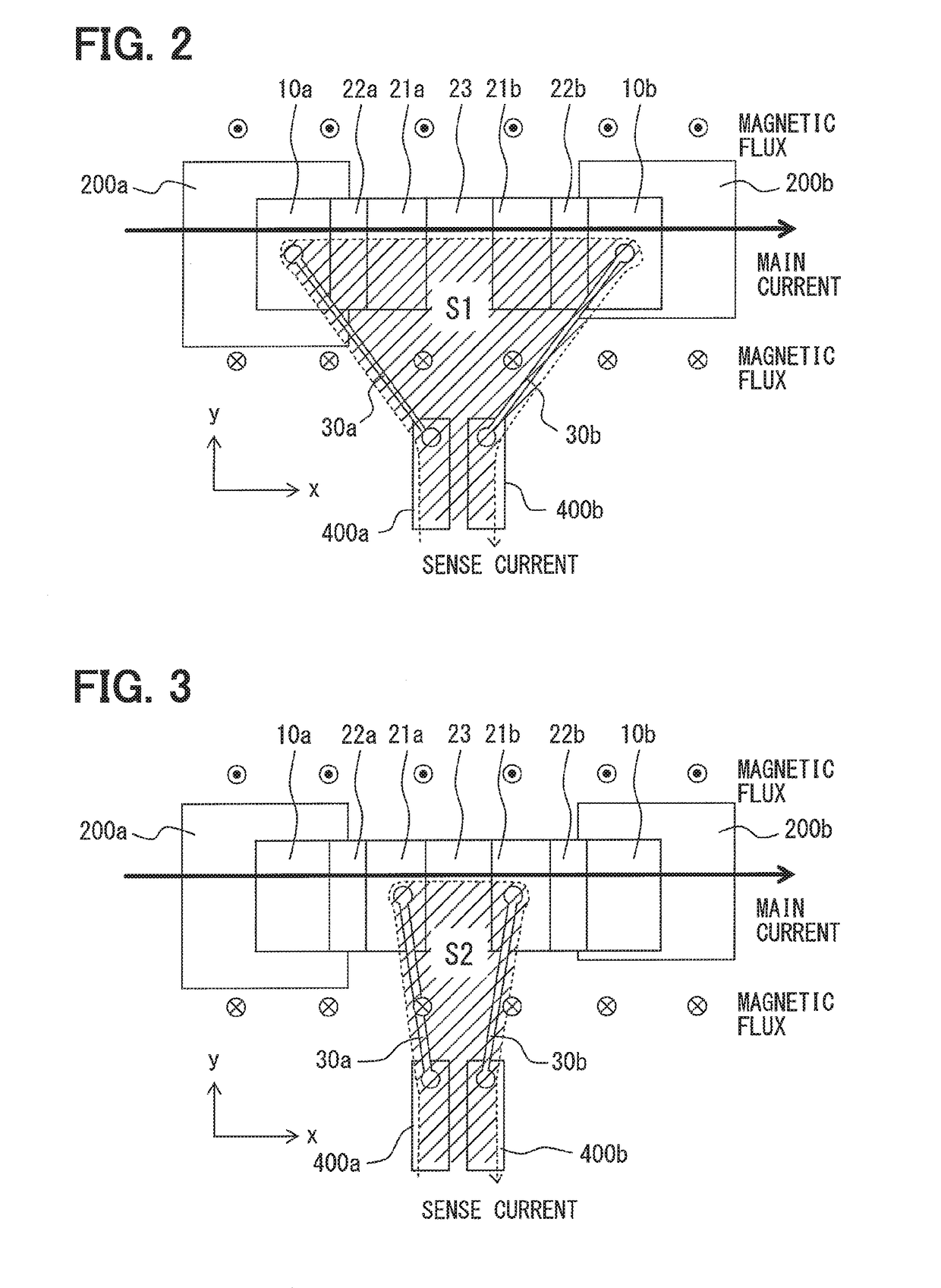Shunt resistor
a resistor and resistor technology, applied in the direction of resistor details, voltage/current isolation, instruments, etc., can solve the problems of inability to achieve a sufficiently high degree of accuracy in measuring the current flowing through the connection conductor, the configuration in the related art may not achieve a sufficiently high degree of accuracy, and the resistance value caused by the conductive adhesive can be restricted. , the effect of increasing the accuracy of measuring the current flowing through the resistive elemen
- Summary
- Abstract
- Description
- Claims
- Application Information
AI Technical Summary
Benefits of technology
Problems solved by technology
Method used
Image
Examples
first embodiment
[0025]Firstly, a schematic configuration of a shunt resistor of the present embodiment will be described with reference to FIG. 1.
[0026]As is shown in FIG. 1, a shunt resistor 100 has a surface conforming to the x-y plane and electrically connects two electrodes 200 aligned side by side in the x direction to each other. The shunt resistor 100 described herein connects a first electrode 200a and a second electrode 200b. The electrodes 200 may be, for example, lands provided on a board or a lead frame. In short, a configuration of the electrodes 200 is not particularly limited.
[0027]The shunt resistor 100 includes two connecting parts 10 connected to the electrodes 200 via solders 300 as a conductive adhesive and a bridging part 20 bridging between the two connecting parts 10. The bridging part 20 has a main part 21, an intermediate part 22, and a resistive element 23. The shunt resistor 100 also includes bonding wires 30 used to detect a current value of a current flowing through the...
second embodiment
[0043]The first embodiment above has described the bonding wires 30 as to the bonding positions in detail. In the present embodiment, attention is paid to routing of bonding wires 30.
[0044]As is shown in FIG. 5, two bonding wires 30, namely, the first wire 30a and the second wire 30b, in the shunt resistor 100 of the present embodiment are extracted substantially parallel to an extending direction of the bridging part 20 (an x direction in FIG. 5) to substantially a same direction. Herein, “to a same direction” means that both of the first wire 30a and the second wire 30b are extracted toward a left side on a sheet surface of FIG. 5. That is to say, the first wire 30a and the second wire 30b are extended in the x direction and extracted side by side in a y direction. The present embodiment is of a same configuration as the first embodiment above except for routing of the bonding wires 30.
[0045]According to the configuration as above, a distance between the first wire 30a and the sec...
PUM
 Login to View More
Login to View More Abstract
Description
Claims
Application Information
 Login to View More
Login to View More - R&D Engineer
- R&D Manager
- IP Professional
- Industry Leading Data Capabilities
- Powerful AI technology
- Patent DNA Extraction
Browse by: Latest US Patents, China's latest patents, Technical Efficacy Thesaurus, Application Domain, Technology Topic, Popular Technical Reports.
© 2024 PatSnap. All rights reserved.Legal|Privacy policy|Modern Slavery Act Transparency Statement|Sitemap|About US| Contact US: help@patsnap.com










